“It doesn’t matter how much technical skill you have. If you have something important to say through music, just say it however you can.”
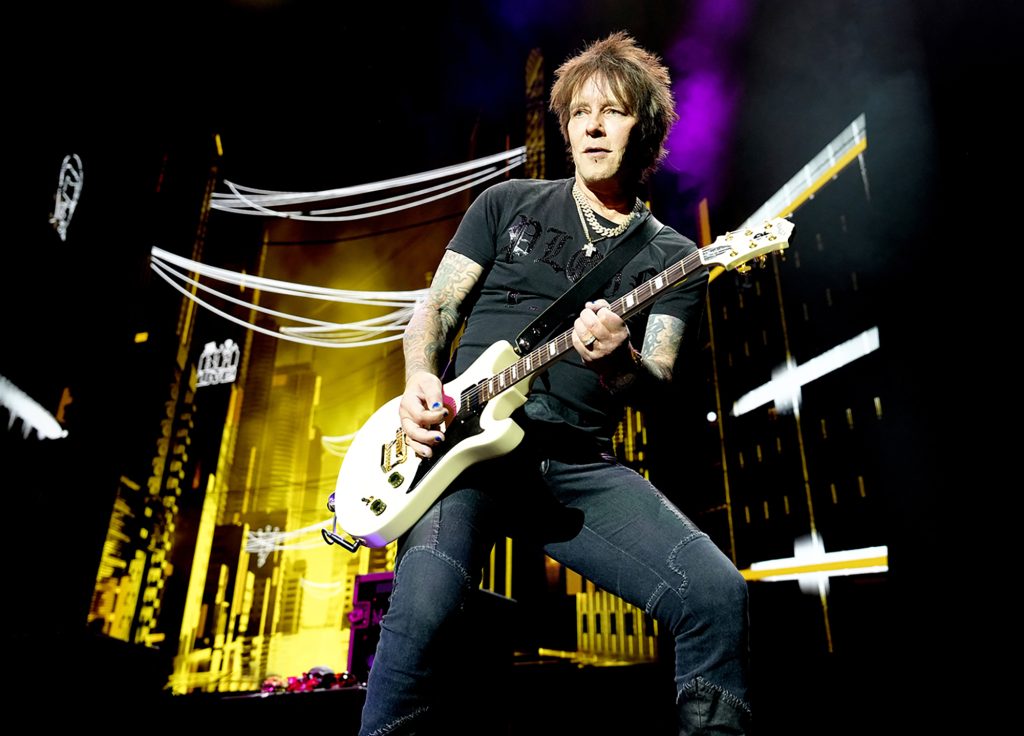
For nearly 15 years now, Billy Morrison has worked as Billy Idol’s rhythm guitarist, as well as a creative force behind the band Royal Machines, and before that Camp Freddy, The Cult, and Circus Diablo. He’s also an accomplished painter, actor, and drug rehabilitation spokesman.
But his most successful accomplishment of late is his third solo album, The Morrison Project, which has shined a new spotlight on the guitarist, thanks to the single “Crack Cocaine,” a collaboration with Morrison’s close friend Ozzy Osbourne and Billy Idol lead guitarist Steve Stevens, which hit #5 on the Rock Mediabase Active Rock chart, #7 on the Billboard Mainstream Rock chart and #22 with a bullet on the Billboard Rock & Alternative Chart (See sidebar).
The single, and much of the other material on the album, started with jam sessions with no intention of creating a hit album, and morphed into a full star-studded album with guest appearances by Slipknot vocalist Corey Taylor, Steve Vai, Ministry’s Al Jourgensen, John5, producer and songwriter Linda Perry and more (see sidebar). Whether or not The Morrison Project is ultimately regarded as Morrison’s best solo record is impossible to know, but it’s the product of decades of work in the music industry making friends, cultivating co-conspirators, and trusting his gut, and it holds fast to the guitarist’s punk rock aesthetic of thwarting boundaries and flaunting experimentation, whether delving into music, painting, or acting.
“What I’ve realized about myself is that I need to make music and do other artistic things in a way that makes the hairs on the back of my own neck stand up,” Morrison tells FretBuzz. “It doesn’t matter what specific style I’m working in. And if other people get that feeling from what I’m doing, that’s great, and it means I’ve made a connection. But the first thing I think about is, ‘Does this excite me,’ and usually what excites me is tone and power.”
In music as in art, Morrison has carefully chosen his tools – first his signature Gibson Les Paul and now his new signature Knaggs guitar – and used them to create a synergy between himself and whoever he’s working with. Mostly, he’s focused on sculpting passionate and enthralling riffs and rhythms, whether for classic rock, alternative, punk, metal, or industrial songs. While he has also contributed leads, he freely admits that solos are not his forte; at the same time, he insists a good solo doesn’t require years of lessons, rapidfire playing or knowledge of multiple scales.
“I can solo,” he says. “I’m not Steve Vai. My hands are big and chunky, but I can play lead guitar. For me, a lot of it is about listening. I’ll sit and listen to a few solos I like, and then learn them. When I really listen to anything like that, I have a huge ‘aha’ moment. The lightbulb goes off and that inspires me.”
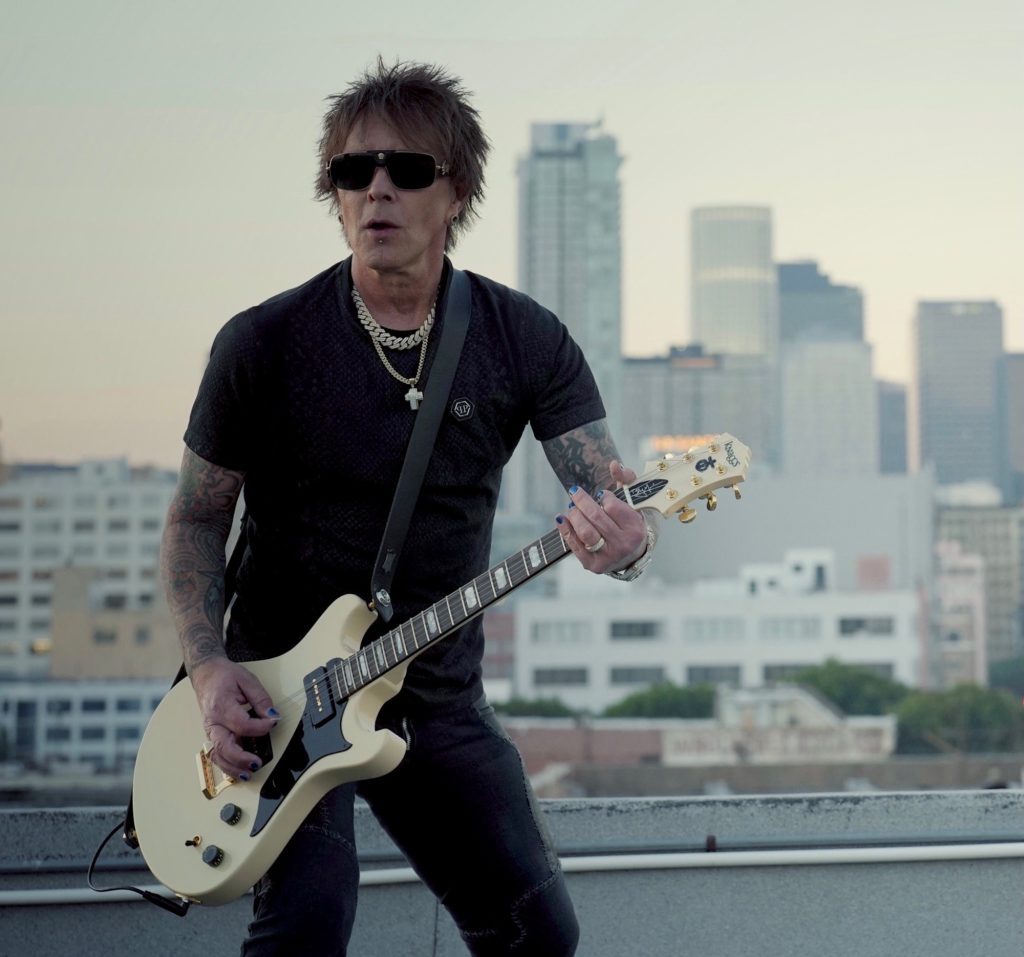
With the support of Stevens and his friend Billy Gibbons (more on that later), Morrison has learned to navigate the fretboard with confidence and clarity (if not blinding speed). And he’s developed an identifiable playing voice. Whether rocking with Billy Idol, jamming hard and heavy with Ozzy Osbourne, exploring EDM with ex-Marilyn Manson bassist Geordie White, or pulling at the heartstrings with Linda Perry, Morrison has developed an approach for every style.
Considering Morrison’s introduction to guitar was Steve Jones of the Sex Pistols, it’s not surprising that Morrison prefers good, muted chugging chords to a flurry of notes in a searing, climactic solo. For him, it’s not about demonstrating mastery of his instrument, it’s about expressing emotion and doing so with enthusiasm. “Playing lead guitar is honestly not what really excites me,” he admits. “For whatever reason, what excites me is playing rhythm guitar with tone and power. The very first thing I ever heard that made the hairs stand up on the back of my neck was Nevermind the Bollocks Here’s the Sex Pistols.”
Shortly after the single he recorded with Ozzy Osbourne, “Crack Cocaine” became a go-to stream for fans of heavy music, Morrison talked about the magic of the Sex Pistols, the real impact of punk, his approach to rhythm guitar, the descent into heroin abuse that nearly ended his career, his return from the abyss, and upward trajectory he has taken as an artist over the past 20 years.
FretBuzz: That’s a great, powerful album for sure, and it’s definitely not speedy guitar solos that make it special.
Billy Morrison: No, there’s a few single note riffs that Steve Jones does, but the whole album is a rhythm guitar player’s dream. Shortly after that, AC/DC came into my life. Sure Angus Young is a fantastic lead guitar player, but Malcolm Young drove the engine of that band and the band wrote amazing guitar parts.
FretBuzz: So, the Sex Pistols started you on your guitar journey?
Morrison: Yeah, I mean, Steve Jones is my guitar hero. Here’s an interesting story about tone. I’m lucky enough to have played onstage with Steve. These days, if Steve is jumping onstage to play some songs, he doesn’t come onstage with his own guitar and amp. I was doing a show where I was very lucky – Paul Cook was on the drums, Glen Matlock was on the bass, and Steve Jones was playing guitar. So, basically, I was onstage with The Sex Pistols, which is this 11-year-old’s dream come true. At soundcheck, I had a bunch of Les Pauls. I had a signature Steve Jones model and the right Marshall, and the right 4 x12 [cabinet] loaded with the right speakers. I’m onstage playing “Anarchy in the UK” and it sounds great. Then, Jonesy shows up, and he takes the guitar from me and puts it on. He’s playing the exact same ax through the exact same amp and, suddenly it sounds different; it sounds exactly like Steve Jones! That tone is in his fingers. I can play the right chords. I can play the song exactly the right way, but I don’t sound exactly like Steve Jones because I don’t have Steve Jones’ hands.
FretBuzz: When did you first hear The Sex Pistols?
Morrison: It was on British television. I was a kid and saw the infamous Bill Grundy show where they swore on TV. The next day, the whole country was outraged. I couldn’t understand why people – including my parents – went crazy like it was like the zombie apocalypse. It was the greatest over reaction I had ever seen by a nation, and it made me go, “I want to do that and have the world react to me that way.” Obviously, that’s a kid’s perspective. As I’ve matured and grown into an adult, I’ve tempered that because I’m not fighting everyone and everything. That would be exhausting. But I do believe that the essence of the Pistols was the idea that it’s not important how you’ve been taught to say something. What’s important is that you’ve got something worth saying in the first place. And that goes for music, too. It doesn’t matter how much technical skill you have. If you have something important to say through music, just say it however you can. They did that. Of course, they were great at what they did, and after that TV experience, I got the album Nevermind the Bollocks, and I thought it was the most powerful thing I’d ever heard, and I went, “I want to do that.”
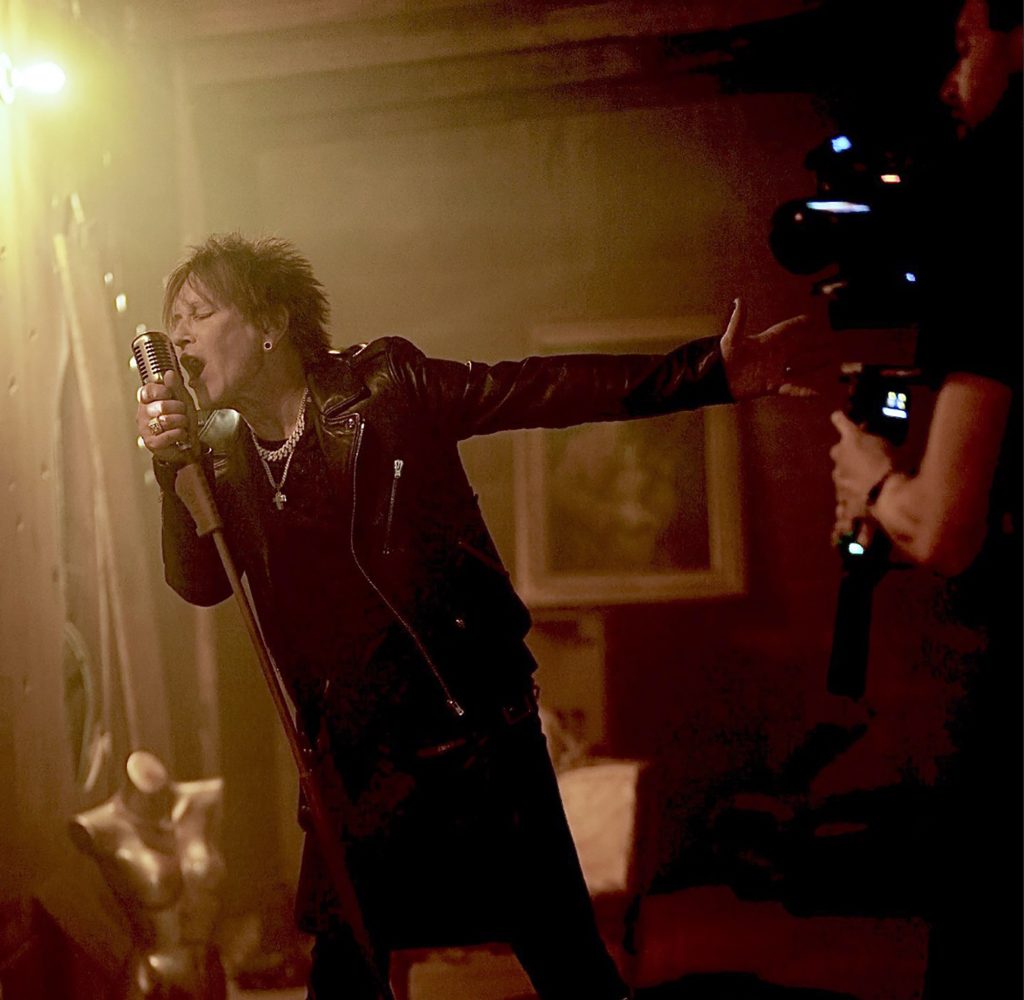
FretBuzz: Did you run out and get a guitar right away?
Morrison: Yeah, my parents bought me my first guitar. It was a Gibson L6S. A lot of people won’t even know what that is. It had a six-way rotary switch on it that looked like it was straight off a Vox AC30, and it might as well have been. I learned about six chords and started a band. I only needed the six chords the Pistols used, and that was it. At the same time, the Clash, Adam and the Ants, and Siousxie and the Banshees provided this new awakening. The Pistols opened the door and it all came flooding in and I soaked it up. I sat there listening and figured it out on my own. I never had a lesson in my life.
FretBuzz: Did you learn to play open chords and power chords by using books or charts?
Morrison: No, I learned through my ears. I listened to the opening chords of “Anarchy in the UK,” and I could hear the first, the fifth, and the octave. Now, I didn’t know what they were called, but I put my fingers on the strings and played the notes my ears heard – the first, the fifth, and the octave. By putting my fingers on different frets on different strings, I discovered what an octave was because it’s the same note [as the root], but it sounds higher. And I could hear that there was another tone between those notes, and that’s how I figured out what a fifth was. So, really, I taught myself how to play a power chord.
FretBuzz: If you like heavy music – be it hard rock, metal, or hardcore – that’s a great way to start out playing rhythm guitar. Without knowing a single open chord, you can play a lot of music by keeping those three fingers in the same position up and down across the bottom four strings. And the simple “E” and “A” power chords, throw in some palm muting and gain, and you’re off to the races.
Morrison: Yeah, I did that, and then Bowie was my doorway into open chords. When I was 13, I had a 16- year-old friend who played acoustic guitar and he showed me an “E.” I played my “E” power chord, and I’d hear that what he was doing was the same thing, but with one more finger, one more jangle on it. So, now I’m listening to Bowie’s “Star Man” and Ziggy Stardust. I picked up the open “E,” “C,” “G,” and “D,” and I went, “Okay, I learned what I need to know to play that song.” I had no interest in becoming a master of the instrument. I just wanted to sound like Bowie on that song.
FretBuzz: With such limited knowledge of theory, how did you figure out how to write songs, stay in key, and play along with rhythm changes?
Morrison: I just started playing with other people. I’ve been in bands that you’ve never heard of and that didn’t do anything. But when you play with other musicians, it’s like a flood of knowledge. And by playing with school friends, then bands that went out and actually supported other bands, you learn what it takes to play with other musicians and how to stay in key. For a long while, I was awful. I was really bad. And then, right when I started to figure out how to play basic music, maybe write a couple of songs, and be in a band, I disappeared for 15 years.
FretBuzz: Did you get discouraged and quit?
Morrison: No, I discovered heroin.
FretBuzz: Did the desire to create and play music again eventually help you out of your heroin spiral?
Morrison: It had nothing to do with music. I was ready to die. I had given up on life. You have to understand, I started shooting heroin around age 15, and by the time I was 18, I didn’t own a guitar. I didn’t have anything. I was homeless. There was no music, there was no guitar, there were no bands. There was no nothing. I was a professional heroin addict for 15 years. When I came out of that at age 29, I had nothing. And getting clean had nothing to do with me. It was the universe, because if left to my own devices, I would be dead or doing time – a lot of it.
FretBuzz: How did “the universe” save you?
Morrison: Maybe the universe said to me, “You’re here to do something a bit better than shoot smack,” and I listened. You can call it divine intervention or a moment of clarity or whatever. For a partial second, I had a view where I was actually going to die. And instead of the big funeral procession with black horses and all of London lined up in the street going, “Oh, Billy Morrison. He was a wonderful man,” I saw that my death would go unnoticed. I would die and the few people that knew me would go, “Well, that doesn’t surprise me.” I realized that wasn’t how I wanted to go out.
FretBuzz: When you got clean did the music bug bite you again?
Morrison: Well, that’s when the real knowledge came. I cleaned up and I tried again. I wrote a bunch of songs, and signed a deal and it was a very steep learning curve. That still continues today, by the way. I’m working with the best musicians in the world now, so I’m soaking everything up. When I’m onstage with Steve Stevens or playing with Steve Vai or John 5 or Slash — all these people I’ve played with – I’m still on the steep learning curve. There’s always something more to learn.
FretBuzz: You played some of the leads on The Morrison Project. Was there a point you decided to learn how to play solos?
Morrison: The reason I’m now able to say I can play lead is because of Billy Gibbons. About 12 years ago, I was onstage with Billy, and he does this thing where he doesn’t tell you anything, he just points to you during a show and that means solo. We’re on stage playing “La Grange” or maybe a Hendrix song, and he points at me. Now, I’m not going to shake my head and go, “No, I’m not gonna do it.” I had hashed together a little bit of a pentatonic solo that I had been messing around with at home, so I played that, and it was okay. After the gig, Billy said, “What you did was really cool because I sprung it on you.” So, the steep lead guitar curve of my life is Billy Gibbons pointing at me to solo. And it inspired me to learn more lead technique because I wanted to be ready the next time that happened. And by hanging out with Steve Stevens in Billy Idol’s band all the time, I’ve gotten a lot of support from him and I’ve gotten much better. Obviously, I’ve been writing music for a long while and when I’m alone in my own studio, I’ve got nothing to lose. So, between Billy and Steve’s positive words and me trying things out in the studio, I’ve learned how to play some lead. I’ll mess with something and go, “Oh, that’s not as hard as it sounds.” And I learned about boxes, so now you can sit in that box and do anything.
FretBuzz: Learning boxes is a great way to learn how to move with a song, but a lot of players get too comfortable with boxes and become afraid to leave them.
Morrison: What’s nice is that I don’t have any restrictions. I can stay in the box or leave it. I enjoy both. I like the constant challenge of trying new things, and on this album, there are actually some solos I played that I’m really proud of.
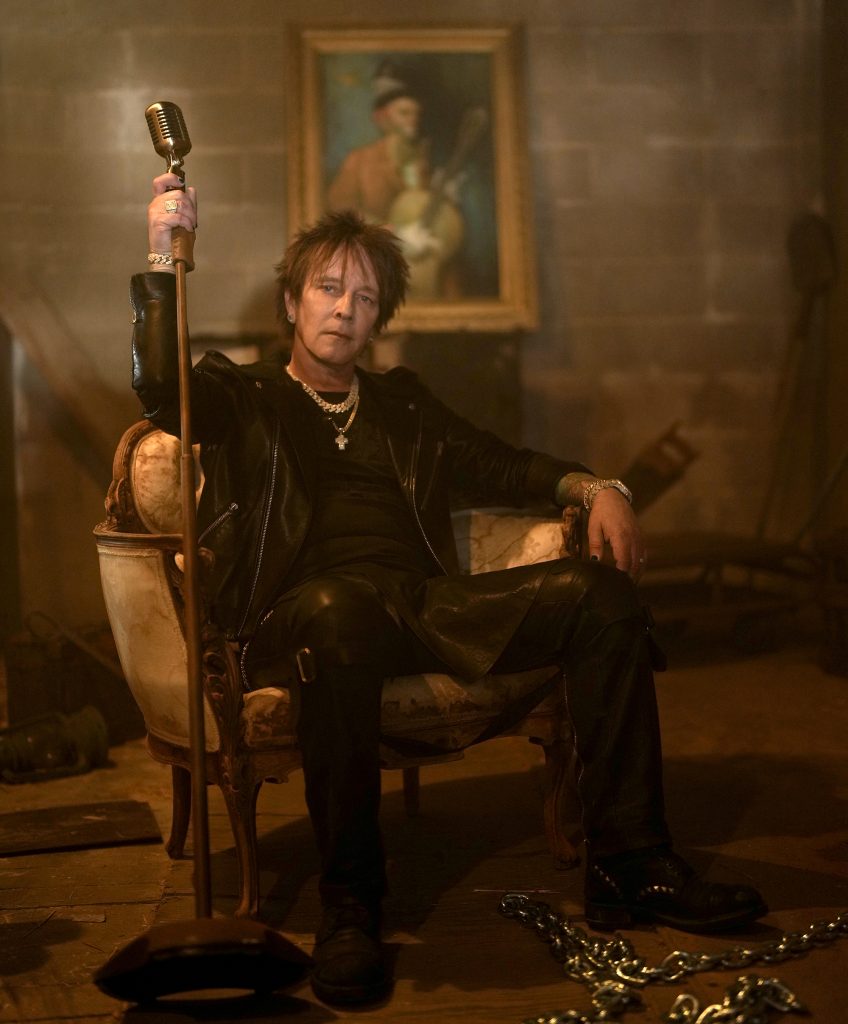
FretBuzz: What was your biggest break as a guitarist?
Morrison: I signed a record deal with Geffen. I formed a band with some real musicians this time, not just school kids. They were in their late 20s, and at the time Nine Inch Nails were taking off. It was all about this techno and industrial music and I dug it. I’ve always been into technology. So, we had Akai S900 [12-bit samplers]. They were racked up running samples, and we wrote a bunch of stuff and got signed, which gave me the confidence to realize I could do this properly and make music. That band never went anywhere, though we toured and opened for Motorhead.
FretBuzz: Any great Lemmy stories?
Morrison: Plenty, but none that I’m going to… Look, I was a good friend of Lemmy’s. One of the last tours he did was with Black Sabbath in South America. He was pretty frail at that point, and I was on that tour just hanging out with Ozzy on his plane. It was me, Ozzy and Lemmy. We put Lemmy on the plane so he could get around quicker. And it was just nice. Towards the end, I think he knew what was coming his way. But he was just really cool, telling us stories about hanging out with Sid Vicious and being in Hawkwind. There’ll never be another Lemmy.
FretBuzz: Does playing rhythm guitar have more to do with the fretting hand or the picking hand?
Morrison: It’s definitely about the way the right hand hits the strings. Look, I can play “Rebel Yell” every night and it sounds great. But it doesn’t sound like Steve [Stevens]. His right hand is different from my right hand. And I don’t want to blow smoke up my own ass here, but if someone took my guitar and played “Drowning,” the first single on [The Morrison Project], it wouldn’t sound like me doing it. It’s a simple riff, but I dig in with the pick and my index finger. So, for every pick stroke I hit double. This is something I’ve developed over the years thinking about tone. I hold the pick close to my fingers and I hit with the flesh of my index finger and the pick at the same time and the palm of my hand is always very, very close to the tailpiece so that I can mute at a fraction of a second. So, my rhythm has a lot to do with that, and it affects how the chords I’m playing with my left hand sound when they come through the speakers. The strength with which you hit the strings also affects the sound. Also, timing is everything. You can’t be a good rhythm guitar player if you can’t count properly and if you’re not dead tight — metronome tight — which I am.
Back to the Pistols. You’ve got a four-on-the-floor beat, and Jonesy is one of the tightest chuggers. If you’re chugging, you don’t just mute it and off you go. It’s mute. Let it off a little. Mute. Let it off a little. And you do that along to whatever the rhythm is.
FretBuzz: Do you tend to favor the bridge or neck pickup?
Morrison: Both. I flick between them, but when I’m playing rhythm I’m usually on the bridge pickup. If I want that little Slash-type sound in there, I switch up.
FretBuzz: You have a Signature Gibson. Do you use that exclusively onstage?
Morrison: I have a new signature guitar through Knaggs. I discovered [the company] through Steve Stevens. His tone is absolutely perfect, and he had a deal with them. So, he gave me a couple of his SSCs, and I loved them. They’re pretty much the same as the Les Paul aged style. And the build quality is stunning. It’s perfect. It’s not off a factory line. In Billy Idol, the idea is not for me and Steve both to be on Les Paul-type guitars with Seymour Duncan pickups because then everything sounds pretty much the same, aside from what you put into the sound with your right hand. I come from a background of players like Johnny Thunders, Sex Pistols, Heartbreakers, New York Dolls, and a lot of them played P90s. So, I spoke to Knaggs about doing a Johnny Thunders Junior-style guitar. They had a model, but I needed it completely redesigned for my big fat fingers. Also, I had to have noiseless P90s because we’re not playing these songs that have no dynamics, right? I need to be able to stop playing or hold down and not have a buzz from the PA that’s louder than the rest of the band. So, Knaggs built the Billy Morrison model from the ground up. I wanted a lot of weight, so the body is slightly thicker and the neck is based on a 60s profile with jumbo frets. That’s my guitar of choice right now. Although if you come see me live, I also use an Ibanez Jem that Steve Vai gave me, and a couple of Gretches. And I still have the Gibson Les Paul.
FretBuzz: What’s your amplifier of choice?
Morrison: I’m using Friedman amps exclusively. It’s literally the best head I’ve ever heard. The tone is unbelievable. And I use 4X12’s loaded with Celestion low-wattage speakers.
FretBuzz: Do you approach guitar differently when you’re playing your solo stuff than when you’re playing rhythm guitar with Billy Idol?
Morrison: The rhythm approach isn’t different, but that’s a really good question. Steve and I have worked out a lot of the parts so that even when we’re playing power chords in the choruses, we’re doing slightly different things. Maybe we’re playing different inversions. So he’s on the Knaggs SSC, I’m on the Gnaggs Morrison with the P90s. I’m playing a seventh fret inversion and he’s down on the open “E,” and it just makes the sound thicker. And, I think that has given Steve the space to play what he originally played on the albums because, previous to me joining the band, he was covering rhythm and lead, and those records have a lot of parts on them. So, when he would go into a signature lead part onstage, the bottom of the song wasn’t there. So, now when he’s doing a lead, I’ll play power chords underneath to fill in what was missing before. We also work out a lot of little riffs and spots in the song where we pay guitar harmonies. Everything is quite carefully worked out. You need to do that when you’re playing live because you don’t want anything missing from the sound.
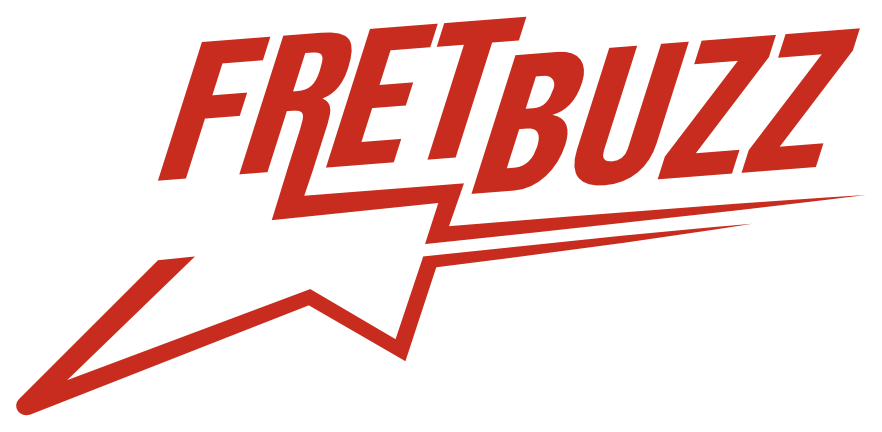
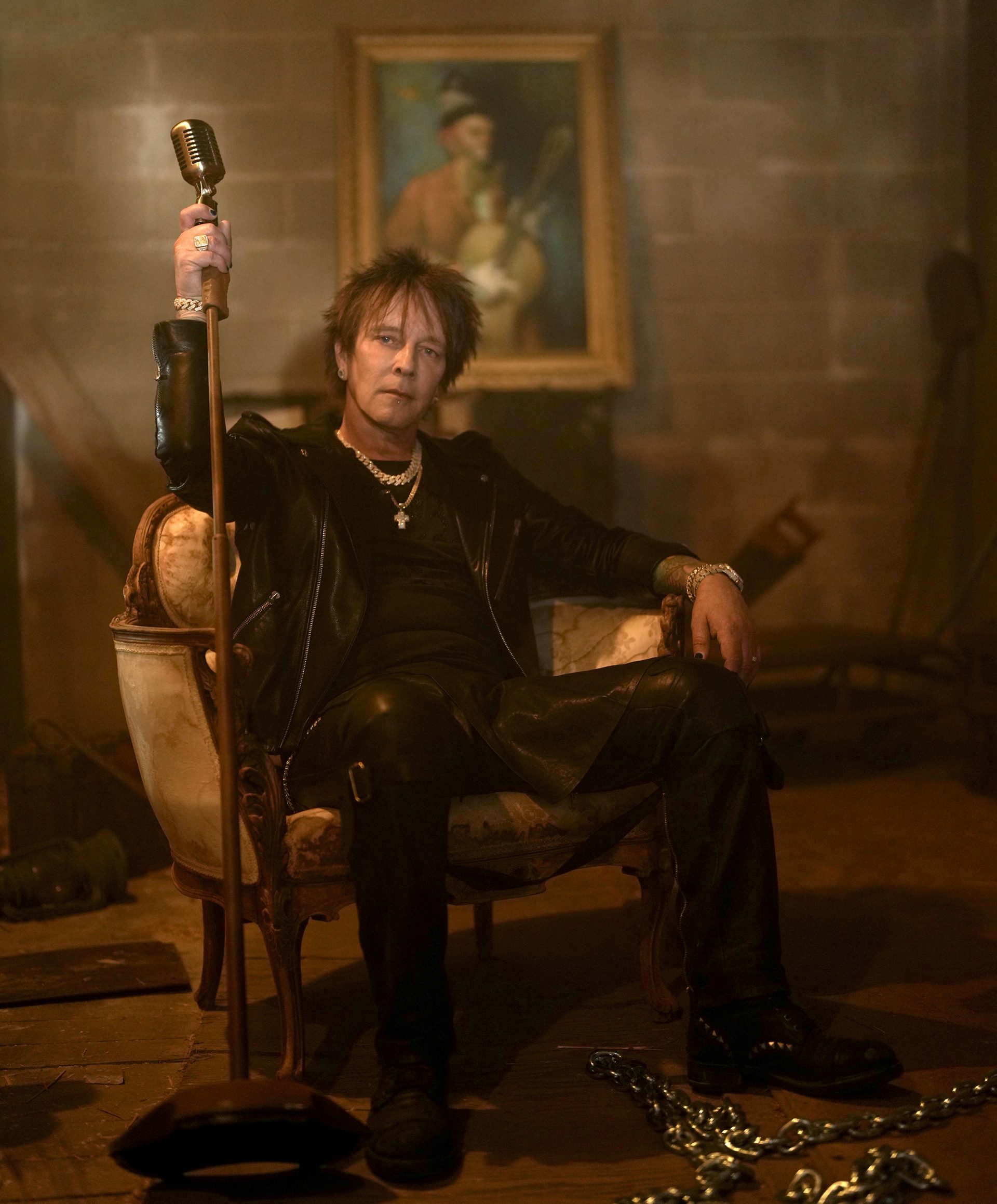

Fantastic –